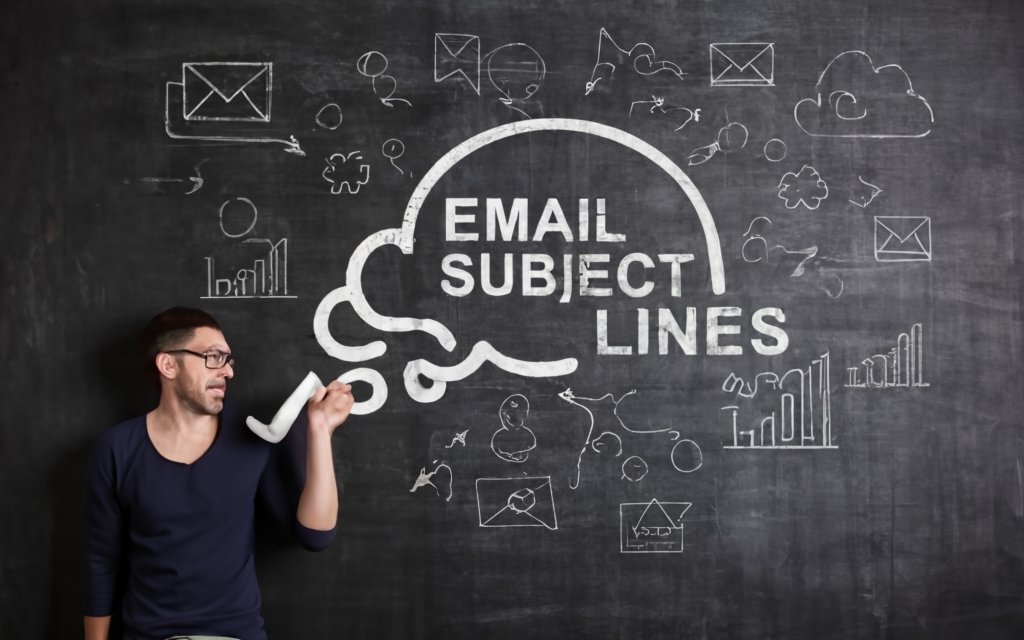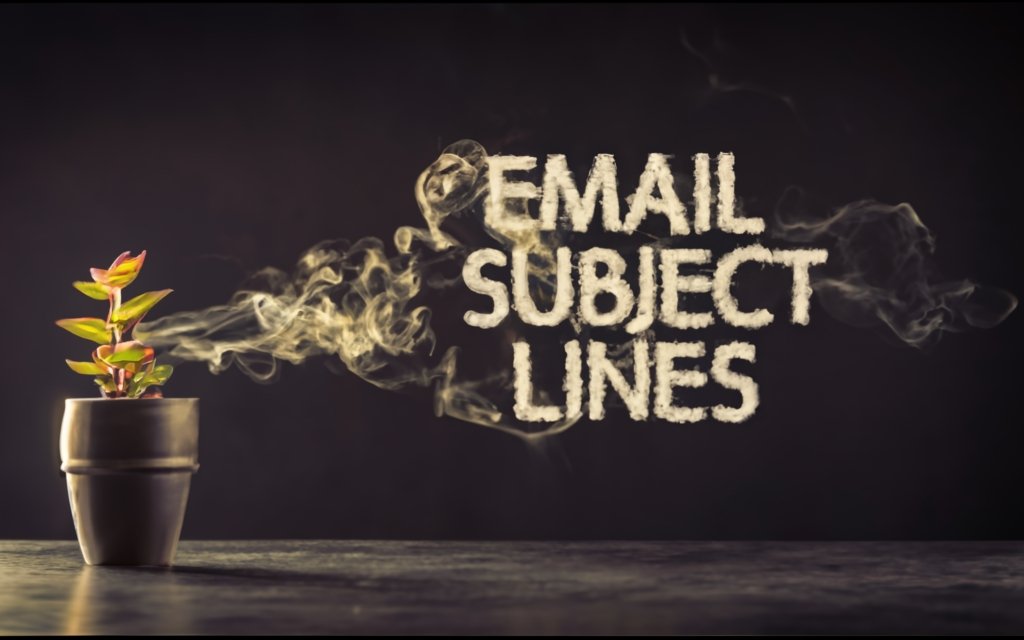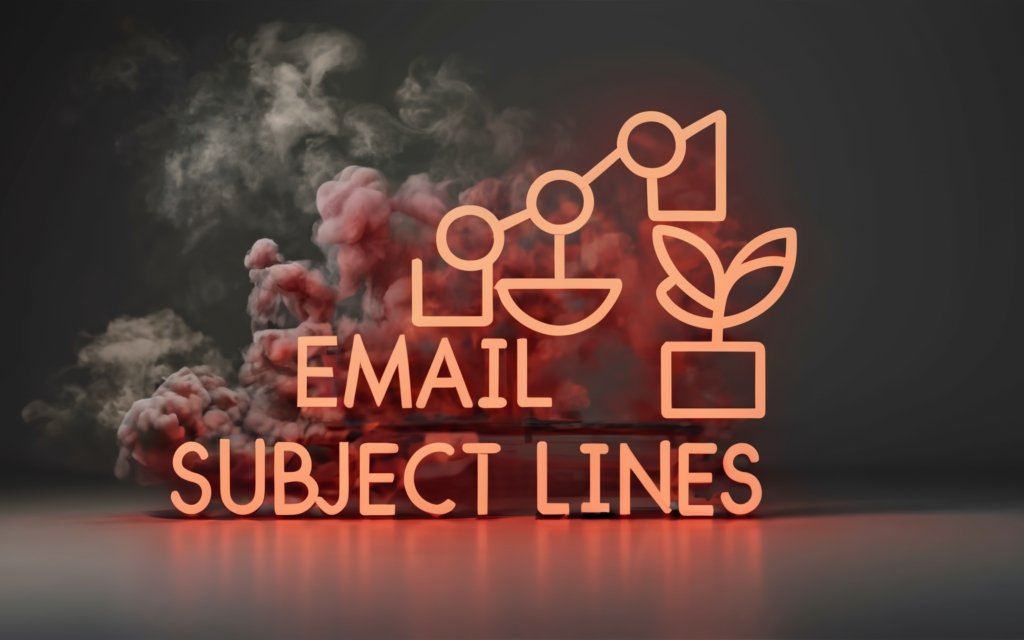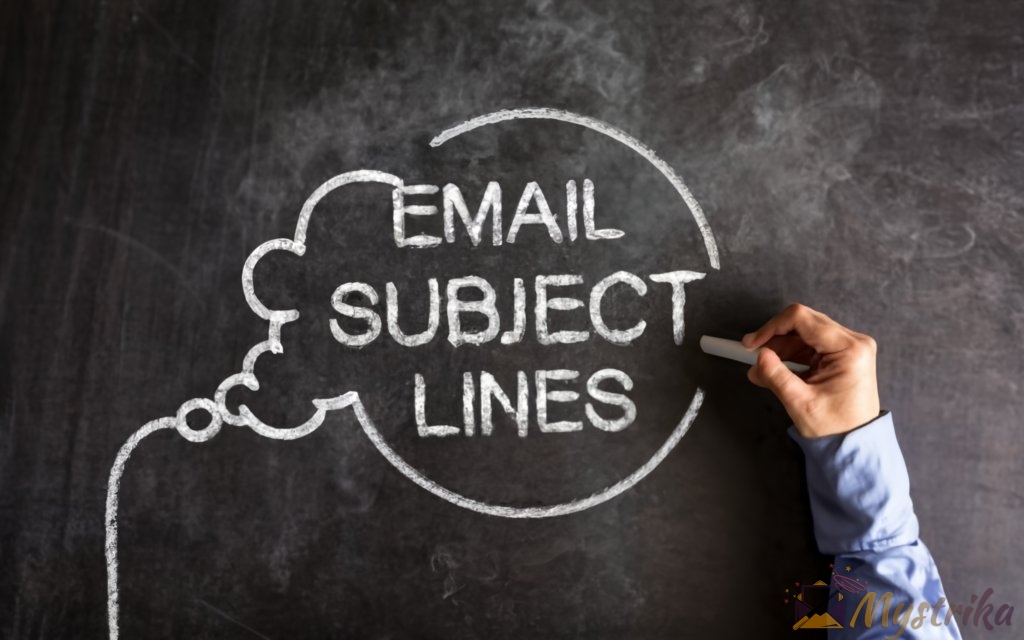In the battle for inbox attention, your email subject line is the first (and often only) chance to convince subscribers to open, read, and act. But with endless distractions and overflowing inboxes, crafting irresistible subject lines is an art and science. This comprehensive guide explores proven techniques to engage your audience amidst the noise. You’ll learn research-backed best practices, mobile optimization strategies, alluring subject line formulas, personalization tactics, spam avoidance tips, and advanced testing methods using real-world examples. The small details of language, structure and formatting make a huge impact. Apply these subject line optimization insights to capture curiosity in crowded inboxes and boost campaign performance. Let’s dive in to the essential elements of email subject line mastery.
Why Subject Lines Matter
Email subject lines may seem insignificant, but they play a crucial role in determining the success or failure of marketing campaigns. Here’s why you should obsess over crafting irresistible subject lines:
Open Rates Directly Impact Campaign Results
Let’s start with the obvious – open rates have a direct correlation with all other campaign metrics. Subject lines are the first and only chance to grab attention before emails hit the trash folder. Even a slight bump in open rates cascades down the funnel.
According to Campaign Monitor, subject line optimization can increase open rates by as much as 50%. And Litmus found that 28% of email recipients open emails based solely on the subject line appeal.
The downstream impacts of optimizing subject lines include:
- Higher clickthrough rates – curious subscribers who opened for the subject line check out content.
- Increased conversions – more opens and clicks lead to more customers taking desired actions.
- Better deliverability – higher engagement improves sender reputation and inbox placement.
- More revenue generated – the math is simple: more opens = more sales.
The proof is in the pudding. In one experiment, replacing a generic subject line (“New Products”) with a personalized one including the recipient’s first name led to a 56% increase in opens and 152% lift in clickthroughs. The huge impact subject lines make cannot be overstated.
Subject Lines Make First Impressions on Subscribers
Your subject line is likely the first interaction a subscriber has with your brand. In the hyper-competitive attention economy, first impressions matter more than ever.
Your subject line is essentially a micro-billboard to make an instant impression among swaths of other messages. Much like judging a book by its cover, people will form opinions on your brand based on subject line quality, tone, and appeal.
Compelling subject lines build trust, affinity, and brand loyalty with subscribers. Boring or spammy ones do the opposite. Subject lines also influence whether subscribers engage with future emails or unsubscribe altogether.
A strong first impression goes a long way. Invest time to understand your audience and their motivations. Speak directly to what they care about in subject lines to delight and engage.
Opportunity to Grab Attention in a Crowded Inbox
Inboxes are more cluttered than ever. The average office worker receives 121 emails per day. Your promos are likely sandwiched between work messages, newsletters, notifications, and personal chatter.
Driving opens amidst the noise is no easy task. But short of hand delivering messages, subject lines present the greatest opportunity to grab attention.
Even for loyal subscribers, a subject line fail means losing in the blink of an eye. Analysis reveals that subject lines are read before the sender name in 79% of cases. This highlights their importance for breakthrough.
Time-crunched professionals skim and scroll quickly. You have 1-3 seconds at most to hook interest. The tried and true marketing tactics still win – highlight value, incite curiosity, and convey urgency to rise above the fray.
Let’s summarize the key takeaways:
- Open rates have a cascading impact on all campaign metrics
- Subject lines shape first impressions of your brand
- They represent a chance to grab attention amidst crowded inboxes
Now that we’ve covered why they matter so much, let’s explore the specific elements that comprise irresistible subject lines.

Key Elements of High-Performing Subject Lines
Now that we’ve covered why subject lines are so critical, let’s explore the specific elements that set the top-performing ones apart. Based on historical data, research, and testing, these are the key ingredients for irresistible subject lines:
Urgency
Creating a sense of urgency is one of the most effective ways to compel opens and clicks. Phrases like “limited time,” “ends soon,” or “last chance” imply exclusivity.
According to SocialPilot, subject lines using urgency increase open rates by 15% on average. The logic is simple – people are motivated to act when they believe an opportunity is fleeting.
Some examples:
- 24 Hours Only: 50% Off Summer Styles
- Last Chance: Upgrade to Premium for 50% Off
- Price Increase Coming Soon: Lock In Your Rate
- Limited Time Offer: Get Your Free Trial
- Flash Sale Ends Tonight: Shop Now & Save Big
Urgency is especially impactful before an imminent event like a sale ending, webinar date, or subscription renewal. But exercise some restraint – false urgency quickly loses effectiveness. Use time sensitivity selectively and appropriately to maintain trust.
Curiosity
Unlike outright stating a deal or offer, curiosity leaves some mystery to uncover. Open-ended questions, intriguing how-tos, and “guess what” phrases entice curiosity.
According to HubSpot, subject lines that leave readers wondering can boast open rates up to 30% higher. Some examples:
- Guess What? We Added [Feature X]
- Are You Overpaying for [Service]?
- Ever Wonder How [Successful Brand] Crushed It?
- Do This Before Your Subscription Renews
- Quick Question For You…
Curiosity blending with value works wonders, like “How This Airline Increased Revenue by 200%.” Vague curiosity loses its charm quickly, so ensure payoff inside the email.
Special Offers
This one might seem obvious, but special offers and deals still reign supreme. According to Contact Monkey, promo-based subject lines improve open rates by 14% on average.
Some examples:
- 40% Off Your Purchase for a Limited Time
- Flash Sale Today Only: [Product] for 80% Off
- We Miss You! Get 20% Off with Coupon CODE123
- 2 for 1 Deal: Get Double the [Service]
The key is specificity – mention the actual discount, product name, or special promotion to make it enticing. Exclusivity helps as well, by making an offer only for loyalty members or email subscribers.
Personalization
Personalization makes people feel special and connected to your brand. Segmenting lists and integrating data to include subscriber names, locations, past purchases, or interests can work wonders.
Research shows emails personalized with first names in the subject line boast 7% higher open rates on average. Other options are location-based content, behavioral details like past site or email activity, and segmented lists based on user attributes.
Some examples:
- Hey [First Name], Your Guide to [City] is Here!
- [First Name], Your Order Has Shipped!
- Your Netflix Binging Guide, [First Name]!
- New [Interest] Content We Think You’ll Love
Personalization works for consumables like Netflix, retail purchases, contextual location or timeliness, and behavioral data. The key is relevance – personalized content should delight recipients by being highly relevant and useful.
Timeliness and Relevance
Topically timed subject lines showcase your brand as an authority on trendsing news and events.
References to holidays, public events, seasonal topics, and other timely happenings establish relevance. For example:
- Gear Up for the Big Game with Our Top Picks
- Last Minute Halloween Party Ideas
- 21 Timely Tax Tips for the New Year
Newsjacking – capitalizing on trending news or viral stories – works splendidly when woven genuinely into subject lines. For example:
- How [Brand] Is Responding to [News Event]
- 3 Lessons We Can Learn from the Latest [Viral Story]
The key is relevance. Don’t force connections for the sake of trends. Make sure timely references are on-brand and useful.
Name Recognition
Respected influencers, celebrities or brands elicit instant recognition among subscribers. Mention names that your target audience knows, admires and follows.
Subject lines spotlighting big names perform extraordinarily well in multiple studies. For example:
- Why [Influencer] Loves Our [Product]
- Our Favorite [Celebrity] Approved Gadgets
- Exclusive Interview with [Prominent Public Figure]
Ensure relevance and avoid name dropping just for attention. Ultimately the influencer or brand mentioned should relate to your content and offer value to the reader.
Intriguing Storytelling
Storytelling sows curiosity and a desire to uncover more. Subject lines posing interesting scenarios, plotlines, or teasers entice opens.
Some examples:
- What Happened When We Said No to a Billion Dollar Buyout Offer
- She Tried 5 Weight Loss Plans – One Worked Miracles
- Learn His Morning Routine for Massive Productivity
This approach shines for long-form content like blogs and guides. Schedule storytelling subject lines in your editorial calendar to promote new content. Sprinkle curiosity into the storyline while summarising key value points.
Appropriate Length
Length limitations vary across different email clients and devices. On desktop, HubSpot found that subject lines with 11-20 characters had the highest open rate.
But for mobile optimization, follow these best practices:
- IPhone (portrait): 27-40 characters
- Android (portrait): 20-40 characters
- Outlook: 75 characters
So shoot for 30-50 characters for compatibility across major mobile apps.
Some key takeaways for length:
- Concise beats clever – convey value clearly
- Avoid overstuffing – remove frivolous details
- Personalize if helpful – name inclusion
- Test different lengths – see what resonates
These core elements encompass tactics and best practices proven to captivate subscribers and boost engagement. Now let’s explore ways to put them into action.

Research-Backed Best Practices
Beyond the core elements of effective subject lines, research and testing reveal proven best practices. Let’s explore key learnings to help polish your subject line game.
Use Data From Past Campaigns
Historical performance data is a goldmine for understanding your audience’s preferences. Analyze subject lines from previous email campaigns to identify trends.
Sort by open rate to uncover top performers. Look for patterns in terms of length, content type, promotions, and other attributes of high open rate subject lines. Also factor in unsubscribe rate – a subject line with above average unsubscribes should raise a red flag despite opens.
Pay attention to poor performers too and hypothesize why they failed to resonate. Use these insights to craft new subject lines and avoid past mistakes.
Tools like HubSpot and Mailchimp make it easy to filter and sort campaign data for analysis. Don’t rely on guesswork – let data guide your subject line decisions.
Test Subject Lines for Mobile and Desktop
Ensure a seamless experience by checking subject line length across different devices. With [XX]% of emails opened on mobile, optimization is crucial.
Use preheader text to provide supplementary context on small screens. Avoid awkward truncation or unrelated snippets.
HubSpot found a sweet spot of 38-40 characters for mobile subject lines. But regardless of length, focus the core value proposition up front – the first 5-10 words are most visible.
Subject lines under 30 characters excel on even smaller smart watches. Meanwhile desktop and webmail clients permit lengthier options around 50-60 characters.
Testing will reveal ideal parameters for each audience. Vary length, content and structure to determine the winning formula.
Start With Action Verbs
Compelling action verbs like “discover,” “explore,” “reserve” and “unlock” stimulate urgency and excitement. Starting subject lines with active verbs instead of passive phrases boosts opens.
For example “Reserve your seat now for the webinar” outperforms “New webinar on Link Building tactics.”
Stale verbs like “get,” “find,” “learn,” and “understand” won’t move the needle. Be vivid – help the reader visualize taking the action.
Sprinkling power words throughout also enhances click appeal. Terms like “surprising,” “challenging,” “immediate,”, and “remarkable” pack a punch.
Avoid Common Spam Trigger Words
Reckless use of certain words flags messages as spam, deterring opens. Extensive research by Yesware identified the worst spam offenders, including:
- buy
- discount
- earn
- money
- now
- offer
- percent off
- percent
- apply now
- free gift
Also avoid ALL CAPS, spammy fonts/styles, and overusing !? characters. Most important – convey value honestly without hyperbole. Following anti-spam laws and practices helps deliverability.
Limit Special Characters
Emojis, gifs and symbols grab attention, but avoid going overboard.
Litmus suggests no more than 1-2 emojis in subject lines. Too many flags as spam. Also, not all special characters render properly across different email clients.
For symbols like © TM & | % $ # @ ★ ↓ → →, be prudent as well. Use only if relevant and sparingly – excessive symbols appear salesy and insincere.
Ask Questions
Thoughtful questions prompt curiosity and clicks, like:
- Are You Overpaying for Shipping?
- What Will You Create With Our New [Product]?
- Ready for a [Result]?
HubSpot recommends avoidance of:
- “Can we” and “Will you” – too pushy
- “Do you” and “Are you” – overused
Instead pose specific questions about desired outcomes. For example:
- Want to Save 50% at [Store] this Week?
- What Would You Do With an Extra $1000?
Highlight Exclusivity
Phrases that make readers feel special or “in the know” build affinity and loyalty. For example:
- As a valued subscriber…
- VIP Access: [Benefit]
- For our eyes only…
- Your exclusive invitation to [Event]
Establishing exclusivity works for:
- Offers only for email subscribers
- Early access for top customers
- First dibs for loyalty program members
- Referral bonuses and partner perks
- Webinars, events and content available to a select group
The tone should pamper and delight – like rewarding inner circle membership.
Be Specific With Numbers
Precise numerical specifics boost perceived value and trust:
- The Top 7 Skills Every [Job] Needs
- 101 Ways to Improve [Business Function]
- Join 800+ Attendees at Our Annual Conference
Figures also quantify value:
- Slash 40% Off Your First Order
- Earn $500 When You Refer a Friend
- 62 Resources to Elevate Your [Skill]
Where appropriate, cite stats and data – people love concrete facts. For example: “Our clients gained 32% more leads last year.”
Leverage FOMO
FOMO (fear of missing out) is a powerful motivator. Subject lines that instill FOMO include:
- Last Chance for Early Bird Conference Tickets
- Today Only: Half Price Deal
- Your Free Gift Expires Soon…
- Inventory Almost Gone: Our Top Selling [Item]
FOMO sparks action by playing up scarcity. But use judiciously – false scarcity erodes subscriber trust when overdone.
The key is driving urgency around legitimate limited-time offers and exclusives. FOMO subject lines are perfect for promos ending soon, expiring coupons and giveaways, or availability fluctuations.
These proven best practices will refine your subject line skills. Always test new ideas vs. existing high performers – then double down on what moves the needle.
Let me know if you would like me to expand or modify this section in any way. I can provide more examples or statistics around these tips as needed. Please also let me know if you have any other best practices you would like me to cover.
Subject Line Formulas and Examples
While each audience is unique, some formulas tend to universally boost open rates. Let’s explore subject line templates you can model for better results.
[X] Free Until [Date]
The tried and true “[Offer] Free Until [Deadline]” format conveys exclusivity for a clearly defined period. For example:
- Premium Plan Free Until July 10
- Get Your Free Ebook Until Friday
- Free Shipping Until December 24
To increase urgency, specify the actual expiration date and time, like “Free Trial Until Friday at Midnight EST.”
You can also cite dollar savings like “Get $30 Off Until Tuesday.” If the offer is highly relevant like free shipping for an ecommerce store, opens should skyrocket.
New [Product/Service] – Try it Today
When launching something new, this format piques curiosity. For example:
- New Video Course – Try it Today
- New [Software] – Try it Now
- Just Released: Our 2023 [Product Line]
Mentioning the newness helps overcome skepticism of yet another promotional email. “New” signals you have something relevant and timely to share.
Last Chance for [Offer]
Warning of a promotion ending drives action due to FOMO. For example:
- Last Chance for 50% Off
- Final Hours for $100 Off
- Today’s the Last Day for Free Shipping
Countdown urgency works as well, like “48 Hours Left for 40% Off.” Be honest about actual expiration dates though – deceptive scarcity leads to mistrust.
[Number] Ways to [Achieve Result]
Listicle subject lines are eternally popular, especially when citing specific tips. For example:
- 5 Ways to Boost Website Traffic
- 10 Steps to a Better Presentation
- 7 Hacks for a More Productive Morning
Lists promising clear outcomes attract interest, like “9 Paths to Higher Conversions” or “6 Steps to Reduce Shopping Cart Abandonment.” Feature the headline number and result up front.
For [Name]: Upgrade Your [Product]
Personalized subject lines gain traction by speaking directly to the individual. For example:
- For Alex: Upgrade Your Software Plan
- Hey Sam, Time to Renew Your Subscription
- Amanda, Improve Your [Skills]
Name familiarity coupled with valuable recommendations resonate strongly. Avoid messaging that appears pushy – aim for helpfulness.
This formula also accommodates:
- Location personalization – Deals in Austin This Weekend
- Purchase details – Amanda, Your Order Shipped!
- Behavioral data – Kieran, You Left Items in Your Cart
Test different options and language to find what clicks with each audience. Personalized subject lines are a surefire way to ratchet engagement.

Personalizing Subject Lines
Generic subject lines miss opportunities to connect meaningfully with subscribers. Personalized subject lines establish familiarity and relevance. Let’s explore some impactful personalization tactics.
First Name Personalization
Including first names personalizes outreach instantly. For example:
- Hey Alex, Here’s a Gift For You
- Sarah, We Miss You!
- John, Your Order Shipped!
Research by Experian revealed 7% higher open rates for name inclusion. Familiarity builds rapport and makes people more receptive.
But don’t overdo it – occasionally swap first names for friendly monikers like “Hey friend” or “Hi pal” for variety.
Location-Based Content
Location personalization lends context and local appeal. For example:
- Outdoor Activities in Austin this Weekend
- New Restaurants to Try in London
- Portland – Here are the Best Hiking Trails
Timing matters too. For example, a Monday morning coffee shop recommendation lands better than late Friday night.
Weather triggers work as well, like “Stay Dry Seattle – Umbrellas on Sale 50% Off.”
The key is tight relevance between location, context, timing, and your offer. Avoid vague generalities – be as targeted as possible.
Behavioral Personalization
Leverage behavioral data like past emails opened, links clicked, site browsing, purchases made, and content downloaded. Use this to tailor subject lines around known interests and activity.
For example:
- You Visited Our [Category] Page – New Arrivals Just In!
- 5 New [Topic] Articles Based on Your Reading History
- Left Items in Your Cart? Discounts Ending Soon!
Citing specifics like pages visited, items remaining in the cart, or downloaded content type demonstrates familiarity.
Just ensurelevance – don’t force connections based on weak behavioral signals. Smoothly integrate personalized details that delight and assist subscribers.
Segmenting Lists
Divide contacts into segments like:
- Geography
- Demographics
- Purchase history
- Content preferences
- Frequency of engagement
Create targeted subject lines for each segment based on mutual interests and attributes. For example:
- VIPs: Enjoy Early Access to Our Private Sale
- New Customers: Welcome! Get 20% Off Your First Order
- Lapses Subscribers: We Miss You! Here’s a Comeback Offer
- Power Blog Readers: 3 New Posts You’ll Love
Segmenting eliminates generalization. Determine the most relevant messaging for each subgroup and tailor subject lines accordingly.
Tools like HubSpot and Mailchimp make segmentation easy. Take advantage of list flexibility – send the right message to the right people.
The key to personalized subject lines is relevance. Use subscriber details judiciously to delight, not overwhelm. Test different segments and approaches to pinpoint what resonates best.
Optimizing Subject Lines for Mobile
With mobile dominating the email landscape, optimization is mandatory. Let’s discuss some key ways to craft subject lines for small screens.
Limit to 30-50 Characters
The sweet spot for mobile hovers around 30-50 characters. Why?
- iPhone (portrait): 27-40 chars before truncation
- Android (portrait): 20-40 chars before truncation
- Smart watches: Even less real estate
Concise beats clever on mobile – wasted space exaggerates the issue. Savvy mobile users appreciate brevity.
Trim filler words to keep critical keywords front-loaded. Remove vagueness as well – be laser focused on the core value proposition.
Tools like HubSpot and Mailchimp allow previewing across devices to fine tune length. Stick within 30-50 characters for flexibility.
Front-Load the Value Proposition
Scanning on mobile is hastier – you have 1-2 seconds max to convey value. Lead subject lines with your MVP (most valuable proposition) using these best practices:
- Strong action verb first – “Get”, “Build”, “Reserve” etc.
- Deal or benefit next – “50% Off”, “Earn $100”
- Product, service or topic last – “Hotel Room”, “Our 2023 Report”
For example:
“Grow your traffic with our latest SEO guide”
Not:
“Our latest guide for growing traffic through SEO tactics”
Ruthlessly edit out fluff and get right to the point.
Use Emojis Strategically
Emojis and visual symbols stand out on small screens. But avoid overkill – 1-2 at most deliver impact.
Emojis best amplify emotions related to:
- Deals – 🤑 💰 💵 💸 💲
- Warnings – ⚠️ !!️ ⏰
- Surprises – 🎁 🚨 🎉
- Holidays – 🎃 🦃 🎄 ⛄
- Reactions – 😍 ❤️ 👏 🙌 💯
Place emojis at the end after the value proposition. For example:
“Huge Sale Today Only! 💰”
And always test rendition across major mobile apps – some symbols don’t translate universally.
Proper emoji usage injects personality while maintaining professionalism. Use them strategically based on context and audience preferences.
With the dominance of mobile, optimizing subject lines for small screens is a must. Prioritize value, tighten length, and leverage visual icons for maximum impact on-the-go.

Avoiding Spam Filters
Spam filters are the arch-nemesis of email marketers. Let’s review some tips to keep your legit emails out of the dreaded spam folder.
Limit Exclamation Points
One ‘!?’ is tolerable but avoid excessive repetition like “Hurry!!! Sale Ends Today!!!”
Why such adversity towards exclamations? Here are a few reasons:
- Over eagerness appears salesy and insincere
- People dislike being yelled at – it’s plain annoying
- Spam filters associate !!! with actual spam
Rather than force hype, establish value clearly. For example “Final Hours: 50% Off Sale” gets the urgency across without screaming.
An occasional ! is fine for truly special offers. But use them sparingly and never start subject lines with them.
Don’t Use “Act Now” and Questions Together
You might think subject lines like “Ready to grow your business? Act now!” work great. Unfortunately, they are a well-known spam formula.
The combination of “?!” plus action phrases alerts spam filters. Even if legitimate, these combo subject lines often wind up blocked or relegated to spam folders.
Rather than use high pressure tactics, establish relevance. For example:
“Growing Your Business This 2023”
Poses interest without the pushy vibe. Drop the spammy structures and reorient around value.
Avoid Suspicious Phrases
Extensive research has flagged high spam correlation with phrases like:
- “Earn cash”
- “Work from home”
- “Limited time only”
- “Buy now”
- “Free shipping!”
- “Best price”
Essentially, anything that looks like a late night infomercial raises suspicion. Over-enthusiasm and urgency are trademarks of low quality offers.
Subject lines focusing on legitimate value dodge this perception. For example:
“Remote Career Guidance from Top Experts”
Drops the spammy notion for a genuine proposition.
Use Natural Language
Conversational language adheres closer to natural speech patterns and vocabulary. For example:
“Got a minute to talk about improving [X]?”
Vs.
“Exclusive webinar on strategies to enhance [X]”
The first flows like a real person asking for advice. That familiarity establishes trust – and avoids tripping spam filters hunting for sales jargon.
Other examples:
“Thought you’d want to see our new [product]”
“Heard you might like these [type of items]”
Informal language humanizes subject lines. Just ensure clarity and specificity to provide value.
Some final tips:
- Establish sender reputation with good deliverability practices
- Learn your audience interests to tap into relevance
- Use double opt-in and permission protocols
- Carefully evaluate any purchased email lists
- Monitor spam complaints and unsubscribes
Avoiding spam folders begins long before subject lines. But optimizing them based on what spam filters hunt for is crucial.
Continuously Test and Refine Subject Lines
Optimizing subject lines is an iterative process. Let’s explore some ways to continually test and refine your email subject line strategy.
A/B Testing
A/B testing compares the performance of two (or more) different subject lines. The goal is to determine which variant results in higher open and clickthrough rates.
Some best practices for A/B testing subject lines:
- Test one variable at a time – length, offers, emojis etc.
- Send at same time of day and day of week
- Use same email list and template
- Rotate variants evenly
- Run test for 1-2 weeks minimum
- Focus on statistical significance over small differences
Tools like HubSpot and Mailchimp allow easy A/B test workflow automation. Set up split tests directly within campaign creation.
A/B testing reveals the right subject line formula for each audience. Use it continually to refine and improve over time.
Analyze Engagement by Segment
Rather than evaluating subject lines overall, dig into performance by segments like:
- Geography
- Age
- Purchase history
- Email preferences
- Contact source
Perhaps subject line length has no clear winner overall. But among 18-25 year olds, shorter lines work best. These granular insights inform segmentation and personalization.
Track Trends Over Time
Analyze subject line performance relative to past results to identify trends.
Some metrics and benchmarks to assess:
- Open rates vs. recent averages
- Unsubscribe rate trends
- Click to open rates over time
- Engagement for established vs. new segments
- Devices and clients gaining/losing share
Longitudinal tracking highlights areas of improvement and decline. Watch for seasonal or cyclical trends tied to buying habits as well.
Iteratively Improve Through Experimentation
Treat subject line optimization as an ongoing endeavor. Explore new ideas while refining proven performers.
Maintain an evergreen split test framework to trial frequent variations at small scale. Scale winners, eliminate poor performers, then restart the evaluation.
Repurpose and evolve learnings across campaigns and segments. For example, emoji usage may boost open rates among Millennials but not Gen X. Adapt accordingly.
Exhaustive experimentation and vigilant tracking provides the insights to continually refine subject line performance.

Conclusion and Key Takeaways
Optimizing email subject lines is an intricate endeavor – but worth the effort. Let’s recap the key lessons to help craft irresistible subject lines:
Focus on Relevance
Generic subject lines miss the mark. Establish true relevance based on audience interests, goals, and pain points. Use personalized details judiciously – don’t force connections.
Lead With the Most Valuable Proposition
On cramped mobile screens, you have 1-2 seconds to convey value. Ruthlessly front-load subject lines with the core benefit or offering.
Speak to Outcomes and Emotions
Subject lines resonate when they speak to desired outcomes like saving time or earning more revenue. Positive emotions like anticipation and delight work too.
Follow Proven Formulas
Leverage proven templates as a starting point then test and adapt them for each unique audience. For example:
- [Offer] Free Until [Date]
- Hey [Name]: [Relevant Recommendation]
- [Number] Ways to [Achieve Desired Outcome]
Keep Critical Details Front and Center
Place key information like discounts, deadlines, and exclusive access at the beginning of mobile-optimized subject lines.
Use Visual and Emotional Symbols Judiciously
Emojis, gifs and other symbols add personality when used sparingly. But avoid overkill – let relevance and value shine through.
Speak Conversationally
As we’ve learned, there are many nuances that impact subject line efficacy. But generally, friendly and conversational language connects best.
Continuously Experiment and Optimize
Consider subject line optimization an ongoing endeavor. Routinely A/B test new ideas and refine based on learnings.
Track Performance Obsessively
Look beyond opens and click rates. Dig into unsubscribes, spam complaints, engagement by segment, and longitudinal trends to uncover optimization opportunities.
Avoid Ham-Fisted Sales Tactics
Hard sells like overblown hype and pushy demands are instant turnoffs. Establish value honestly through relevance.
Crafting high-performing subject lines requires research, creativity and relentless testing. But the effort pays dividends in the form of higher open rates, clicks, conversions and ultimately revenue.
Hopefully these tips and strategies provide a blueprint to engage your audience amidst crowded inboxes. Let me know if you have any other key takeaways you would like me to include. The goal is to leave readers with clear guidance they can immediately put into action.
Key Takeaways
- Focus on driving urgent curiosity by highlighting exclusivity, relevance and value in subject lines.
- Leverage data from past campaign performance to identify what resonates with your specific audience.
- Ensure subject lines render optimally across mobile devices and email clients through thorough testing.
- Begin subject lines with actionable verbs and focus on communicating desired outcomes.
- Personalize strategically based on first name, location, behaviors and list segmentation to boost engagement.
- Limit subject lines to 30-50 characters for mobile compatibility and preview truncation considerations.
- Apply proven subject line formulas as a starting point then test and adapt them for your audience.
- Use emojis and visual symbols judiciously to add personality without overdoing it.
- Speak conversationally in subject lines to connect with subscribers. Avoid hype and salesy language.
- Continuously experiment with new subject line variants using A/B split testing.
- Track performance obsessively across segments and over time to uncover optimization opportunities.
- Follow spam avoidance best practices to keep out of the dreaded spam folder.
- Treat subject line optimization as an always ongoing pursuit. Use data, creativity and testing to continually refine performance.

